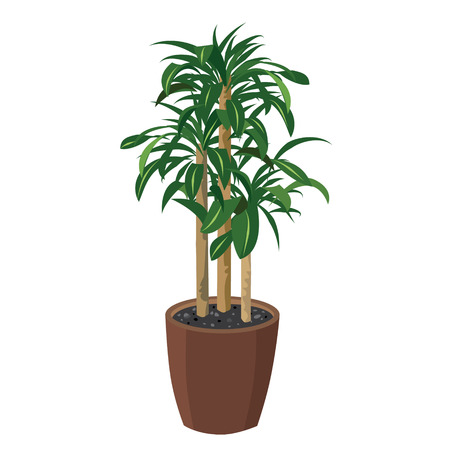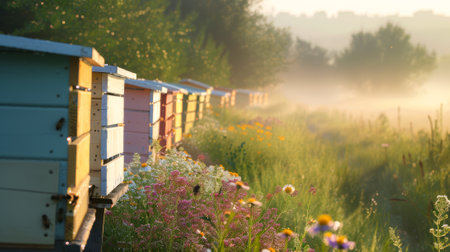Understanding the Allotment Shed’s Role in British Gardening
If you wander through any British allotment site, you’ll soon notice that the humble garden shed is much more than a simple storage space. For many UK gardeners, the shed is the beating heart of their plot—a cherished retreat where hot tea is brewed, muddy boots are swapped for slippers, and plans for planting are quietly hatched. In British gardening culture, the allotment shed serves not only as a practical tool store but also as a cosy sanctuary from sudden showers and brisk winds. It’s where generations share stories, pass on wisdom, and nurture both seedlings and family bonds. Whether you’re hanging your spade after a long day or inviting your child inside to marvel at a freshly sprouted seedling, the shed stands as a symbol of both tradition and creativity on your allotment. As we explore how to organise this special space, let’s first appreciate its unique role—part workshop, part hideaway, always at the very centre of every thriving British allotment.
2. Decluttering and Sorting your Tools the British Way
If you’ve ever peered inside a British gardener’s shed, you’ll know there’s a certain art to keeping it tidy—one that blends practicality with a touch of old-fashioned charm. Decluttering is the first step to reclaiming your allotment shed, turning chaos into calm. Here’s how seasoned British gardeners approach this essential task, ensuring their tools are ready for every season.
Step One: The Grand Clear-Out
Begin by emptying everything from your shed. Lay out all items on a tarpaulin or the lawn, just as many allotmenteers do during a spring clean. This gives you a clear view of what you own—and what might be gathering dust or rust.
Sorting Your Tools: Keep, Donate, or Discard?
With everything on display, it’s time to be ruthless (but fair). Consider each item: Is it functional? Sentimental? Or simply past its best? Use the table below to help you decide:
| Category | Action | British Tip |
|---|---|---|
| Essential tools (spade, fork, trowel) | Keep | Sharpen and oil before storing |
| Duplicates or unused items | Donate | Share with fellow plot holders or community groups |
| Broken beyond repair | Discard responsibly | Recycle metal parts at local tip |
| Sentimental but impractical (Grandad’s old hoe) | Display or store safely | Add a label with its story—a lovely touch for children! |
Categorising for Every Season
Once pared down, sort your tools by their use through the year—a favourite method in British gardening circles. For example, group together autumn pruning shears and leaf rakes, while summer essentials like watering cans and hand forks go in another section.
A Simple Seasonal Tool Checklist:
- Spring: Seed trays, dibbers, hoes for early weeding.
- Summer: Watering cans, trowels, plant supports.
- Autumn: Rakes, pruners, bulb planters.
- Winter: Spades for soil turning, fleece for frost protection.
This way, when the seasons turn—as they so often do in Britain—you’re never caught short-handed. And remember: Involving your children in this process not only teaches them responsibility but lets them share in the magic of an organised shed—a small but meaningful family tradition inspired by generations of British gardeners.

3. Smart Storage Solutions for Compact Sheds
If your allotment shed is more “cosy nook” than “garden palace”, you’ll need to get creative with every inch. British gardeners have a knack for turning tight spaces into treasure troves of order, using both inventive flair and time-honoured traditions.
Hooks for Wellies and Tools
Start with the basics: sturdy hooks along the walls or behind the door. These are perfect for hanging muddy wellies, raincoats, and spades, keeping the floor clear for easy sweeping (and quick games of hide-and-seek). It’s a simple trick that brings joy each time you spot your boots neatly lined up, ready for your next adventure in the plot.
Shelves for Seeds and More
Even a narrow wall can host a shelf or two. Use reclaimed wood for a rustic touch, just like generations of British gardeners before us. Store seed packets in old wooden crates or enamel tins—sorted by season or flower colour, if you fancy. This not only saves space but also invites little hands to help choose what to sow next, sparking curiosity in young helpers.
Repurposed Biscuit Tins for Plant Labels
No British shed is complete without a biscuit tin or three. Once the last custard cream has been enjoyed, put those tins to work! They make charming homes for plant labels, twine, and even special stones found on allotment walks. Let your children decorate them with stickers or paint, making each tin as unique as your gardening journey together.
A Family-Friendly Approach
By blending clever storage with cherished family rituals—like sharing biscuits or labelling seeds—your shed becomes much more than a storage spot. It grows into an inviting place where stories and skills are passed down, one tidy corner at a time.
4. Weatherproofing and Caring for Your Shed
Every British gardener knows that the weather can be as unpredictable as a toddler’s mood swings—one moment, it’s glorious sunshine, the next it’s bucketing down! Keeping your allotment shed protected from the elements is essential for preserving tools, seeds, and those precious moments of family gardening. Let’s discover some tried-and-true tips from UK shed enthusiasts to help keep out the damp, strengthen your walls, and ensure your shed stands strong against blustery British weather.
Keep Out the Damp: Essential Strategies
Dampness is a common foe in Britain’s moist climate. To prevent musty smells and protect wooden structures, consider these preventative steps:
| Tip | How It Helps |
|---|---|
| Install Guttering & Water Butt | Redirects rainwater away from the shed base, reducing rot risk and providing water for plants. |
| Raise Shed on Paving Slabs or Timber Bearers | Keeps the floor dry by preventing direct contact with wet ground. |
| Seal Joints with Weatherproof Silicone | Stops rain seeping through gaps and joints. |
| Add Ventilation (Vents or Small Windows) | Reduces condensation build-up inside the shed. |
Strengthening Walls and Roof: A Gardener’s Shield
The classic British gust demands more than just a sturdy lock! Make sure your shed walls and roof can withstand whatever Mother Nature throws at them:
- Reinforce Panels: Add extra battens or braces to weak spots inside the shed.
- Weatherproof Paint: Use a good quality exterior wood treatment every couple of years; it keeps moisture out and prolongs life.
- Replace Felt Roofing: Check for tears after storms; patch up promptly or upgrade to more durable materials like corrugated bitumen sheets.
- Shed Anchoring: Secure your shed to the ground using anchor kits if you’re in an exposed spot—no one wants to chase their roof across the allotment!
Tender Loving Care: Regular Maintenance Matters
Just as we nurture our children and our seedlings, regular TLC for your shed pays off in reliability. Here are some seasonal reminders:
| Season | Shed Care Task |
|---|---|
| Spring | Check for winter damage; clear gutters; repaint if needed. |
| Summer | Airing out; oil hinges and locks; inspect roof after summer showers. |
| Autumn | Sweep leaves from around the base; check waterproofing before heavy rains set in. |
| Winter | Remove snow build-up; ventilate on dry days to prevent mould. |
A Final Thought: Make It a Family Ritual!
Caring for your shed can become a delightful family tradition—a chance to teach little ones about responsibility while sharing stories over a cuppa. Just like planting seeds for future harvests, each repair and touch of paint helps your garden sanctuary thrive through every season.
5. Organising Seeds, Pots, and Compost like a Pro
Every British allotmenteer knows the joy—and the muddle—of tending to seeds, pots, and compost. With a little inspiration from seasoned gardeners across the UK, you can transform your shed into a harmonious hub that makes every visit feel like a breath of fresh spring air.
Sorting Seeds for Success
Start with your seeds: those tiny promises of future harvests. Use recycled biscuit tins or labelled envelopes stored in weatherproof containers to keep them dry and categorised by sowing month or plant type. A simple wooden seed organiser or an old index card box works wonders. Hang a calendar nearby, so you and your little helpers can track planting times together—a perfect way to nurture both plants and family bonds.
Stacking and Storing Pots with Ease
Pots have a way of multiplying! Nest smaller ones inside larger ones to save space. Repurpose old crates or shelves along your shed walls for easy access. Some British gardeners swear by hanging terracotta pots on sturdy hooks—turning clutter into rustic charm. Get creative and involve your children in sorting pots by size or colour; it’s a playful moment that also teaches organisation skills.
Compost Management Made Simple
Keep compost close at hand but neatly contained. Store bags on raised pallets to prevent damp, or use large lidded bins for homemade mixes. Tuck a small scoop or trowel in a handy spot so topping up planters is always fuss-free. Encourage kids to help with composting—it’s an earthy adventure that connects them to the cycle of growth and decay, just like nature intended.
A Space That Grows With You
When everything has its place, daily tasks become lighter and more enjoyable. Whether you’re plotting the next vegetable patch or simply sharing a cuppa amidst the scent of potting soil, an organised shed turns ordinary chores into cherished rituals—rooted in tradition, nurtured by family, inspired by the gentle wisdom of British gardeners.
Personalising your Shed: A Hub for Community and Family
Your allotment shed is more than just a storehouse for tools – it’s the beating heart of your plot, where connections bloom alongside beans and courgettes. With a few thoughtful touches, you can transform your shed into a welcoming retreat that celebrates both community spirit and family togetherness.
Make Space for Friendly Chats
Bring in a pair of sturdy folding chairs or a cosy bench, so there’s always room to sit down with a neighbour for a natter over a cuppa. Keep a tin of biscuits on hand, and you’ll soon find that your shed becomes the go-to spot for sharing gardening tips, swapping seeds, or simply enjoying each other’s company between jobs.
Create Little Corners for Little Gardeners
If you garden with children or grandchildren, dedicate a small corner for them. A low table with colourful pots, mini watering cans, and some picture books can turn storytime into an enchanting part of the allotment experience. These moments of togetherness not only spark curiosity about nature but also sow memories that last far beyond harvest season.
Add Personal Touches
Hang up family drawings, local event flyers, or favourite photos from past growing seasons. A cheerful bunting or an old radio playing classic tunes can make the space feel uniquely yours. By weaving personal elements into your shed, you create an inviting atmosphere where everyone—from seasoned growers to tiny hands—feels welcome.
In true British fashion, the allotment shed becomes much more than storage; it’s a gathering place where stories are swapped, advice is freely given, and laughter echoes among the potting trays. Whether you’re hosting friends for tea or snuggling up for storytime with little ones, your personalised shed will be the heart of your allotment community.


